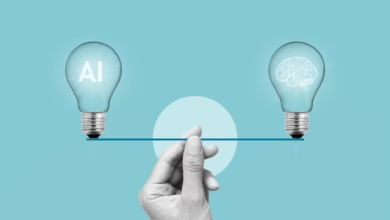Anthropic’s AI Research: Key Insights for Your Enterprise LLM Strategy

▼ Summary
– Anthropic focuses on developing “Constitutional AI,” ensuring models are helpful, honest, and harmless while adhering to human-valued principles.
– Anthropic’s Claude models excel in coding benchmarks, but rivals like Google’s Gemini and OpenAI lead in math, creative writing, and multilingual reasoning.
– Anthropic prioritizes interpretable AI to understand model decision-making, aiming to reduce risks in critical fields like medicine, law, and finance.
– AI safety researcher Sayash Kapoor argues interpretability is valuable but not a standalone solution, requiring complementary tools like filters and human oversight.
– Nvidia’s CEO critiques Anthropic’s approach, advocating for open AI development, while Anthropic emphasizes transparency standards for all AI developers.
Understanding AI interpretability is becoming a critical factor for enterprises implementing large language models. Anthropic, a leading AI research lab, has made significant strides in developing models that prioritize transparency alongside performance. Founded in 2021 by former OpenAI researchers focused on AI safety, the company has pioneered Constitutional AI, a framework ensuring models remain helpful, honest, and harmless.
Anthropic’s Claude 3.7 Sonnet and Claude 4.0 Opus have demonstrated exceptional coding capabilities, though competitors like Google’s Gemini 2.5 Pro and OpenAI’s o3 outperform in areas like math and multilingual reasoning. What sets Anthropic apart is its commitment to interpretability, the ability to trace how models arrive at decisions. This focus could prove invaluable in high-stakes fields like healthcare, finance, and legal compliance, where accountability matters.
Why interpretability matters
AI models today excel at solving complex problems, but their inner workings often remain opaque. Dario Amodei, Anthropic’s CEO, warns that without interpretability, enterprises risk deploying systems prone to errors or misalignment with human values. For instance, a financial institution using AI for fraud detection must explain denials to comply with regulations. Similarly, in medicine, interpretability ensures AI-assisted diagnoses are trustworthy.
Anthropic aims to achieve reliable interpretability by 2027, investing in tools like Ember, an AI inspection platform developed by Goodfire. Ember identifies learned concepts within models, allowing users to manipulate outputs, an approach that could revolutionize debugging and risk mitigation. However, experts like Sayash Kapoor, an AI safety researcher, caution that interpretability alone isn’t a silver bullet. Effective AI governance requires a combination of filters, verifiers, and human oversight.
Broader industry perspectives
Kapoor argues that while interpretability is useful, treating it as the sole solution for AI alignment is misguided. Many safety measures, such as post-response filtering, don’t require deep model introspection. He also challenges the notion that AI development should be restricted to a few entities, a stance echoed by Nvidia CEO Jensen Huang, who advocates for open development.
Despite differing opinions, Anthropic’s research underscores a growing industry trend, enterprises that prioritize interpretability early may gain a competitive edge. Transparent AI systems foster trust, reduce operational risks, and ensure compliance in regulated sectors. As AI adoption accelerates, businesses must weigh performance against accountability, recognizing that the most advanced models are only as valuable as their reliability in real-world applications.
The debate over AI’s future continues, but one thing is clear: interpretability isn’t just a technical challenge, it’s a strategic imperative for responsible AI deployment. Companies investing in this area today will likely lead the next wave of enterprise innovation.
(Source: VentureBeat)






